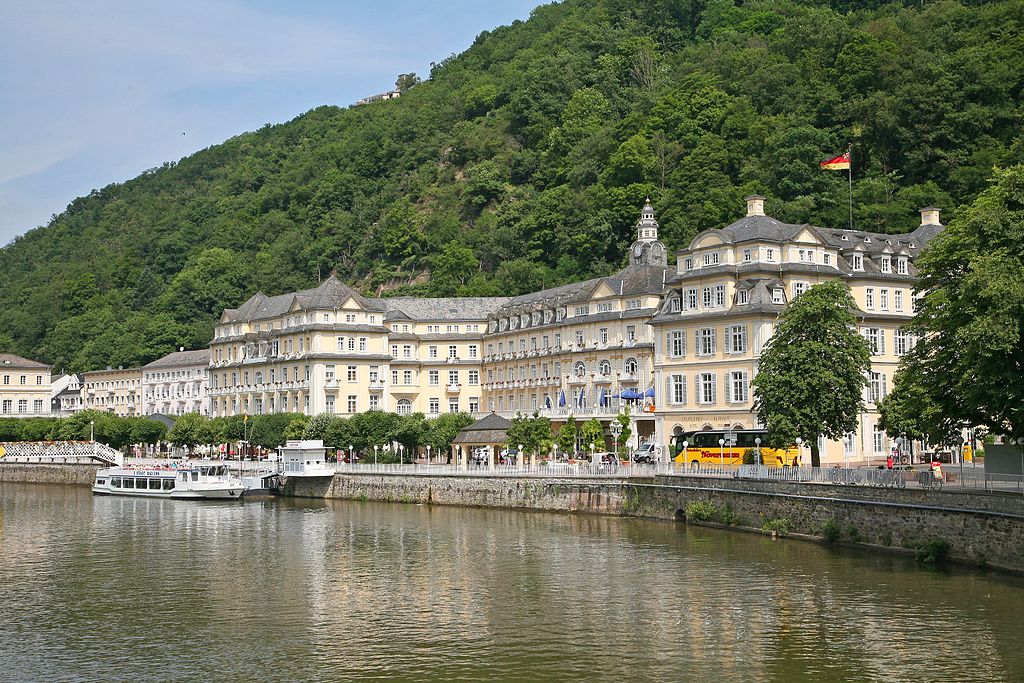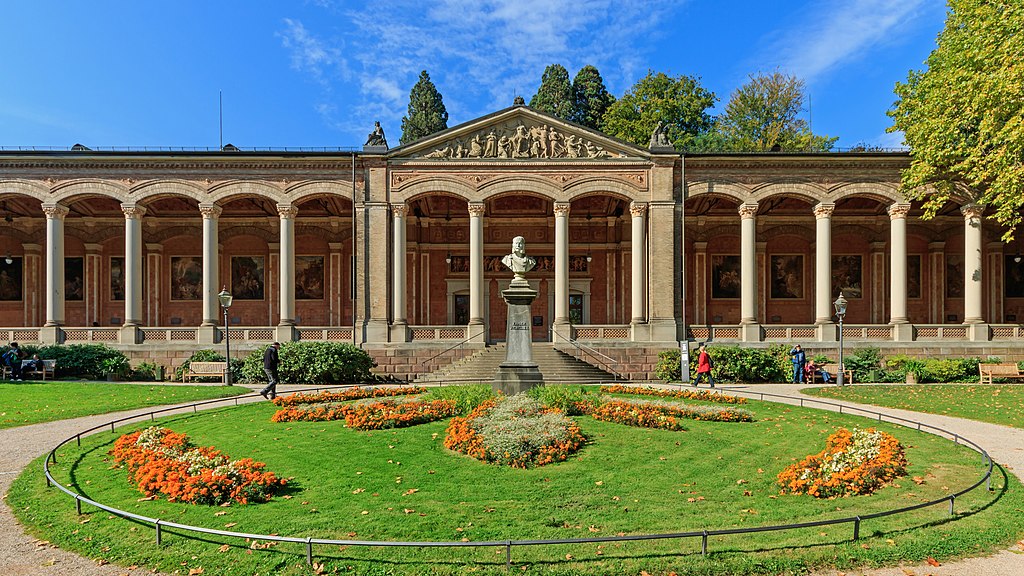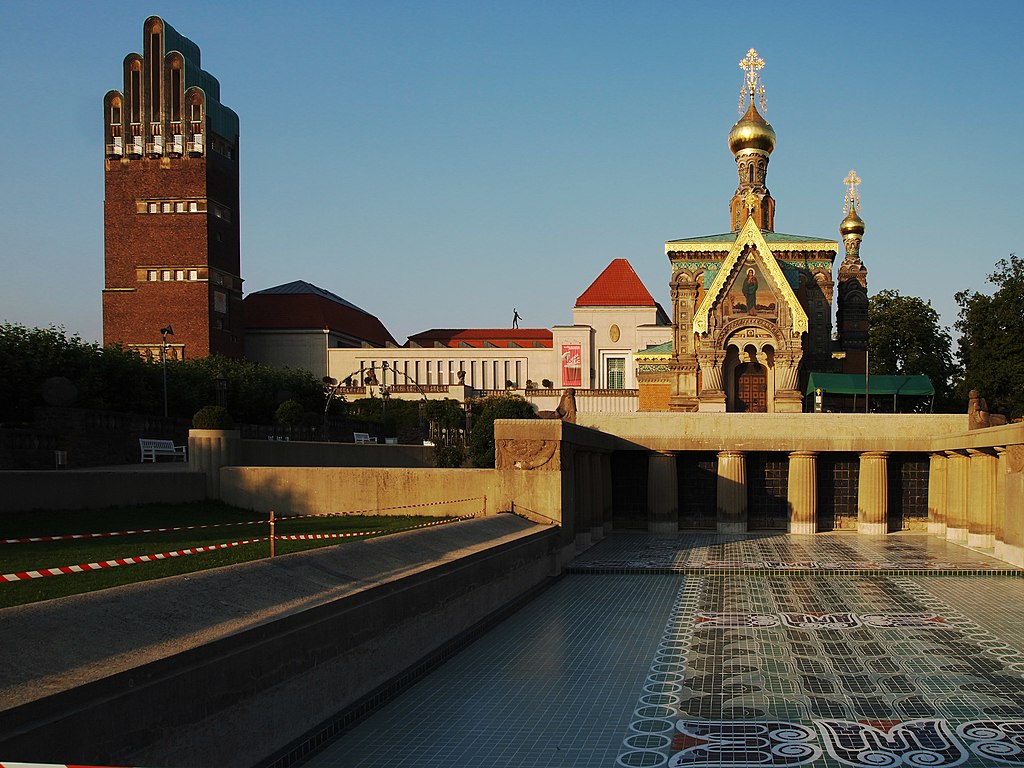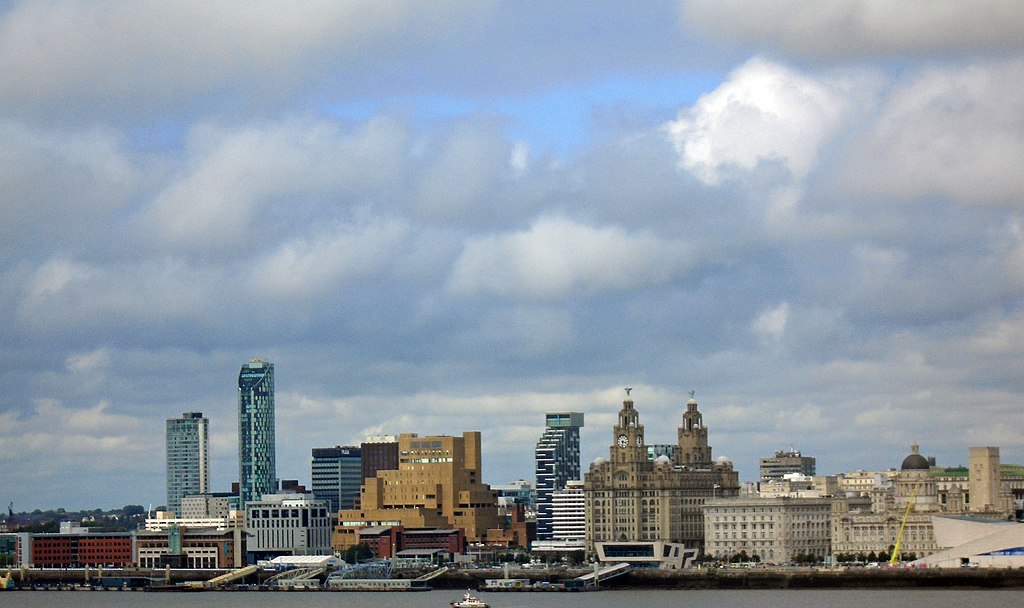UNESCO World Heritage Sites 2021

The UNESCO has decided on the new World Heritage Sites 2021. Here you can find an overview.
Billboard
Skyscrapper
Halfpage
UNESCO met until July 31 to decide on the new World Heritage Sites 2021. The committee awarded the three German spas Baden-Baden, Bad Ems and Bad Kissingen as well as Mathildenhöhe in Darmstadt. But there were also losers. For the third time in history, the UN organization withdrew the title from a city – namely Liverpool. You can find everything about the UNESCO World Heritage Sites 2021 here.
The UNESCO World Heritage Committee met in 2021 from July 16 to 31. The 44th meeting was chaired this year by the leaders in Fuzhou, China. The UNESCO broadcasted the meeting live on the internet. Topics and responsibilities of the committee are firstly the nominations for the World Heritage List, secondly the conservation status and protection of numerous sites, and thirdly the further development of the World Heritage Program. In 2021, more than 40 sites were nominated. These included, for example, the rainforests and wetlands of the Colchis region in Georgia, but also the mining landscape of Roșia Montană in Romania and, moreover, the estate of landscape architect Roberto Burle Marx in Rio de Janeiro, Brazil. Germany, on the other hand, was in the running with these five nominations:
- Major Kurstädte of Europe (joint application with Austria, Belgium, France, Great Britain, Italy and the Czech Republic)
- Borders of the Roman Empire – Danube Limes (western segment) (application with Austria, Slovakia and Hungary)
- Borders of the Roman Empire – Lower Germanic Limes (application with the Netherlands)
- Mathildenhöhe Darmstadt
- SchUM sites Speyer, Worms and Mainz
Medium Rectangle
Halfpage
Endangered UNESCO World Heritage Sites
In addition, the Committee reviewed the state of conservation of 258 World Heritage sites. Of these, 53 sites are officially endangered. Armed conflicts, climate change, natural disasters or construction measures threaten the UNESCO World Heritage Sites. The Committee therefore discussed individual measures, programs and international funding projects to support them.
The World Heritage Committee discussed the situation of the following sites:
- Natural and Cultural Heritage of the Ohrid Region (Albania, Northern Macedonia)
- Great Barrier Reef (Australia)
- W-Arly-Pendjari National Park Complex (Benin, Burkina Faso, Niger)
- Venice and its Lagoon (Italy)
- Valley of Kathmandu (Nepal)
- Volcanoes of Kamchatka (Russian Federation)
- Budapest with the banks of the Danube, Buda Castle District and Andrássy Street (Hungary)
In addition, the Committee considered whether to remove the Selous Game Reserve (Tanzania) and the Maritime Trading City of Liverpool from the World Heritage List.
Skyscrapper
Halfpage
Overview of the new UNESCO World Heritage Sites
Sieh dir diesen Beitrag auf Instagram an
Ancient beech forests and primeval beech forests of the Carpathians and other regions of Europe (Bosnia and Herzegovina, France, Italy, Montenegro, Northern Macedonia, Poland, Switzerland, Serbia, Slovakia, the Czech Republic).
Sieh dir diesen Beitrag auf Instagram an
Archaeoastronomical Complex of Chanquillo (Peru)
Sieh dir diesen Beitrag auf Instagram an
Arslan Tepe (Turkey)
Sieh dir diesen Beitrag auf Instagram an
As-Salt – place of tolerance and urban hospitality (Jordan)
Sieh dir diesen Beitrag auf Instagram an
Mining landscape Roșia Montană (Romania)
Sieh dir diesen Beitrag auf Instagram an
The Work of Jože Plečnik in Ljubljana – People-Oriented Urban Design (Slovenia)
Sieh dir diesen Beitrag auf Instagram an
Dholavira: A city of Harappan culture (India)
Sieh dir diesen Beitrag auf Instagram an
The arcades of Bologna (Italy)
Sieh dir diesen Beitrag auf Instagram an
The engineering of Eladio Dieste: Church of Atlántida (Uruguay)
Sieh dir diesen Beitrag auf Instagram an
The islands of Amami-Oshima, Tokunoshima, Iriomote and northern part of Okinawa Island (Japan)
Sieh dir diesen Beitrag auf Instagram an
Franciscan Missions in the Sierra Gorda in Querétaro (Mexico)
Sieh dir diesen Beitrag auf Instagram an
Getbol, the Korean tidal flats (Republic of Korea)
Sieh dir diesen Beitrag auf Instagram an
Borders of the Roman Empire – Lower Germanic Limes (Germany, Netherlands)
Sieh dir diesen Beitrag auf Instagram an
Dutch water defense lines (Netherlands)
Sieh dir diesen Beitrag auf Instagram an
Ivindo National Park (Gabon)
Sieh dir diesen Beitrag auf Instagram an
Cordouan lighthouse (France)
Sieh dir diesen Beitrag auf Instagram an
Mathildenhöhe Darmstadt (Germany)
Sieh dir diesen Beitrag auf Instagram an
Nice, Riviera winter resort (France)
Sieh dir diesen Beitrag auf Instagram an
Padua’s 14th century fresco cycles (Italy)
Sieh dir diesen Beitrag auf Instagram an
Paseo del Prado and Buen Retiro, Landscape of Arts and Sciences (Spain)
Sieh dir diesen Beitrag auf Instagram an
Jomon prehistoric sites in northern Japan (Japan)
Sieh dir diesen Beitrag auf Instagram an
SchUM sites Speyer, Worms and Mainz (Germany)
Sieh dir diesen Beitrag auf Instagram an
Spa (Belgium), Bad Ems, Baden-Baden and Bad Kissingen (Germany), Vichy (France), Montecatini Terme (Italy), Baden bei Wien (Austria), Karlovy Vary, Františkovy Lázně and Mariánské Lázně (Czech Republic) and Bath (United Kingdom).
Sieh dir diesen Beitrag auf Instagram an
Temple of Kakatiya Rudreshwara (Ramappa), Telangana (India)
Sieh dir diesen Beitrag auf Instagram an
Transiranian Railway (Iran)
Sieh dir diesen Beitrag auf Instagram an
Kaeng Krachan Forest Complex (Thailand)
Sieh dir diesen Beitrag auf Instagram an
Rock paintings at Lake Onega and the White Sea (Russian Federation)
Sieh dir diesen Beitrag auf Instagram an
Culture area of Ḥimā (Saudi Arabia)
Sieh dir diesen Beitrag auf Instagram an
Quanzhou: Market and trading place of the Song-Yuan dynasty (China)
Sieh dir diesen Beitrag auf Instagram an
Colchian rainforests and wetlands (Georgia)
Sieh dir diesen Beitrag auf Instagram an
Colonies of Mercy (Belgium, Netherlands)
Sieh dir diesen Beitrag auf Instagram an
North West Wales Slate Landscape (United Kingdom of Great Britain and Northern Ireland)
Sieh dir diesen Beitrag auf Instagram an
Lower Germanic Limes
Sieh dir diesen Beitrag auf Instagram an
Settlements and artificial mummification of the Chinchorro culture in Arica y Parinacota (Chile).
Sieh dir diesen Beitrag auf Instagram an
Roberto Burle Marx Site (Brazil)
Sieh dir diesen Beitrag auf Instagram an
Hawraman/Uramanat Cultural Landscape (Iran)
Sieh dir diesen Beitrag auf Instagram an
Sudanese style mosques in northern Ivory Coast (Côte d’Ivoire)
UNESCO World Heritage: Important Spa Cities of Europe
In total, there are eleven European cities that UNESCO has now inscribed on its World Heritage List in 2021 with the new title of “Important Spa Cities of Europe”. Their special significance is due to the architectural opulence and choice of materials that define the framework of an urban type of spa town. Places developed around healing springs, which today are witnesses of a once flourishing spa culture.
In this article, we will introduce you to these places and also take a look at other cities that are bearing the title of UNESCO World Heritage Site.
Bad Ems
This Rhineland-Palatinate town on the Lahn River was once considered one of the most famous bathing resorts in Germany. Tsar Alexander II and the later German Emperor Wilhelm I are therefore two of the illustrious guests who exchanged their uniforms for bathing attire here. The insignia of the spa town – the spa house, colonnades, Kursaal, casino and spa park – line up on the banks of the Lahn as if they had been poured out, according to the UN organization.
The town of Bad Ems is located in the idyllic Lahn Valley in the middle of the Nassau Nature Park, on the banks of the Lahn River. Photo: W. Bulach, CC BY-SA 4.0

Baden-Baden
Imposing buildings of outstanding importance for spa architecture were erected in the city on the Oos during the heyday of spa culture. Among them is the Trinkhalle, designed by Heinrich Hübsch, with its richly decorated Wandelhalle. The casino, redesigned in the French neo-baroque style by patron Jacques Bénazet in the 19th century, also belongs to them. The Bénazet family’s donations made Baden-Baden “the summer capital of Europe” in its day, according to Lisa Poetschki, the World Heritage site manager.
The Trinkhalle in Baden-Baden served as a meeting place and a place to linger. Photo: A.Savin (Wikimedia Commons – WikiPhotoSpace), CC BY-SA 3.0

Bad-Kissingen
Much like entering a church, one’s steps slow down at the majesty of Max Littmann’s Trink- und Wandelhalle, the UN agency writes. According to the report, the building immediately blows up a few of the superlatives of the time. After all, it was the largest reinforced concrete building of its kind, the first enclosed drinking hall. To this day, it is still the largest drinking hall in Europe. The central landmark of the city and further evidence of the spa culture of the 20th century is the Regentenbau. It’s the most magnificent building in Bade Kissingen.
Among the eleven UNESCO Important Spa Cities of Europe are also Baden near Vienna in Austria, Bath in England, Montecatini in Italy, Vichy in France, Spa in Belgium, as well as the Czech cities of Karlovy Vary, Franzensbad and Marienbad.
Other artistically and architecturally significant cities in Germany have also received the UNESCO seal:
Darmstadt
On an elevation on the outskirts of Darmstadt’s city center is an ensemble of the early 20th century. The director of the Institute Mathildenhöhe Darmstadt calls the buildings erected by artists the “cradle of the Bauhaus”. Between 1901 and 1914, internationally formative impulses in architecture and modern art emanated from the Mathildenhöhe. Here in Darmstadt stood the first buildings that broke away from the ornament-rich Art Nouveau style. Clear lines and reduced ornamentation consequently led the way into a new architectural age.
Grand Duke Ernst Ludwig founded an artists’ colony on the Mathildenhöhe in Darmstadt in 1899 to promote Hesse’s arts and crafts. In the course of four exhibitions, a number of pioneering buildings were created here until 1914. Photo: Ikar.us, CC BY 3.0 EN

SchUM Cities on the Rhine
The UNESCO declared the cities of Speyer, Worms and Mainz, in Hebrew Shpira, Warmaisa and Magenza, World Heritage Sites because of their outstanding importance for European Jewry in the Middle Ages. This is where some of the oldest evidence of Jewish life in Germany can be found. The history of synagogues, Talmud schools, women’s schools, ritual baths and cemeteries in the SchUM towns dates back to the 10th century. The design of the buildings shaped the architecture of Jewish buildings in much of Europe.
Liverpool loses UNESCO title
The historic port city of Liverpool, on the other hand, is no longer allowed to call itself a World Heritage Site since the last meeting of the UNESCO World Heritage Committee. Planned construction projects such as “Liverpool Waters” and the development of the Bramley-Moore dock since the designation in 2004 would endanger the historic character of the harbor area too much.
In the history of UNESCO World Heritage Sites, the UNESCO has withdrawn a title only twice before. In 2007, Oman fell off the list for reducing the size of an antelope sanctuary by 90 percent. And in 2009, the cultural landscape of Dresden’s Elbe Valley was removed because of the construction of the Waldschlösschen Bridge.
Another UNESCO World Heritage Site that is in danger to lose its title, is the Stonehenge, Avebury and Associated Sites World Heritage Site due to a tunnel that is to be built under Stonehenge. Find out more.
Unesco has withdrawn Liverpool’s World Heritage designation. The committee considers the historic value of the port city damaged by numerous construction projects. Photo: Rodhullandemu, CC BY-SA 4.0













